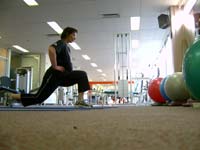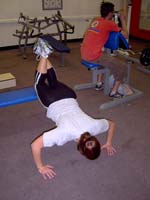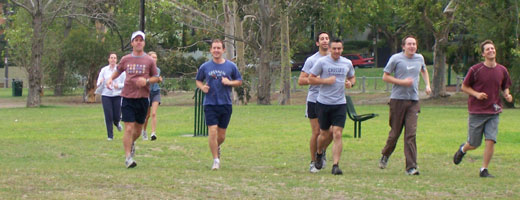 One of the keys to developing strength and developing your general fitness is progressive overload. Now, we aren't going to delve too deeply into exercise science so don't tune out. Progressive overload simply states that in order to cause the body to continue to adapt to a particular load that load must increase over the training program. If you fail to increase the load you are lifting or the volume of repetitions then you will stagnate.
One of the keys to developing strength and developing your general fitness is progressive overload. Now, we aren't going to delve too deeply into exercise science so don't tune out. Progressive overload simply states that in order to cause the body to continue to adapt to a particular load that load must increase over the training program. If you fail to increase the load you are lifting or the volume of repetitions then you will stagnate.Here's an example: let's say you can bench press 40kg and each workout you perform 3 sets of 10 reps at that weight, to adopt progressive overload you could perform 3 x 10 at 42.5kg in the following workout and then lift 45kg thereafter. Get it? You are progressively lifting more weight. Another method is to increase the volume, so initially you might lift 3 x 10, next time 3 x 12 and after that 3 x 14. These are just examples; but it is important to note that each provides a reason for the body to continue to adapt.
Makes sense so far, right?
So, what about this home program?
Okay, overload has been mentioned because when people exercise at home they generally do something like 3 x 20 pushups, 3 x 20 squats, 3 x 20 situps and call it a day. And then they repeat this next time. See the problem? No progressive overlaod.
Here's a simple two day home/office/hotel workout for you to try:
Day 1
*warm up*
 pushups, 5 x 15
pushups, 5 x 15squats, 5 x 25
dips, 5 x 20 (use a chair)
lunges, 5 x 20 (each side)
*stretch*
[next time increase number of reps by 2]
Day 2
*warm up*
sumo squats, 5 x 20 (feet wide apart)
pullups, 3 x 10 (find a tree or some monkey bars)
step ups, 5 x 20 (each side - find a high step, 30cm or more)
burpies, 5 x 10
*stretch*
[next time increase number of reps by 2]
In this intance we are assuming that access to weights is limited. You could use something like this for about 4 weeks and then it would require some alteration to ensure that adaptation is not slowed. This workout would be supplemented by walking/running/cycling etc.
Remember to allow your body to recover. Don't overtrain and don't exercise the same muscle groups on consecuive days.
So, do you get the idea?
If you have any questions, please contact us.









Post a Comment
Create a Link
<< Home